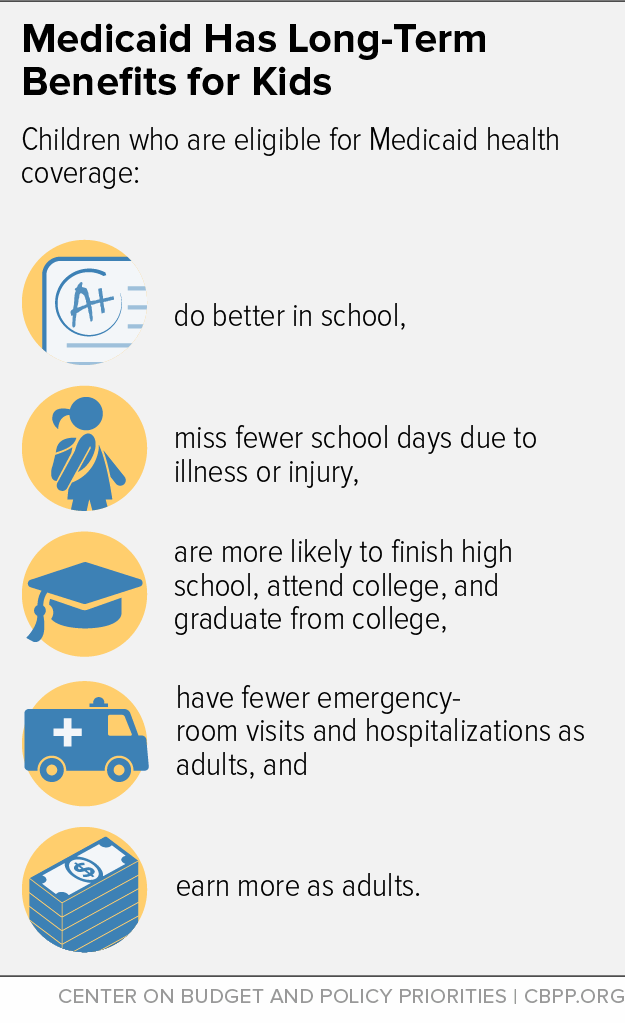BEYOND THE NUMBERS
Children eligible for Medicaid for more of their childhood are less likely to drop out of high school and likelier to earn a college bachelor’s degree, a National Bureau of Economic Research study finds. The authors conclude:
Our estimates suggest that the long-run returns to providing health insurance access to children are larger than just the short-run gains in health status, and that part of the return to these expansions is a potential reduction in inequality and higher economic growth that stems from the creation of a more skilled workforce.
The study evaluated those born from 1980 to 1990, a period in which the federal and state governments expanded Medicaid to reach many more low-income children. It found that every 10-percentage-point increase in likely Medicaid eligibility reduced the high school dropout rate by 0.4 to 0.55 percentage points and raised the college completion rate by 0.6 to 0.8 percentage points.
As a whole, the eligibility expansions over the period had an impact equivalent to cutting today’s high school dropout rate by 9.7 to 14.0 percent and raising the college completion rate by 5.5 to 7.2 percent. That’s similar to the gains from educational reforms such as reducing elementary school class sizes and adopting school-wide performance standards.
Prior research showed that comprehensive health care during pregnancy improves children’s cognitive ability and educational outcomes. These new findings reveal that continued health care throughout childhood produces further educational gains. They also show that Medicaid coverage can narrow the gap in college graduation rates between low-income and higher-income children.
Medicaid coverage improves educational outcomes at least in part by keeping children healthy and enabling them to perform at a high level in the classroom, the authors suggest. They also find evidence that Medicaid coverage helps reduce risky sexual activity, body mass index, substance abuse, and mental health and eating disorders, although their model isn’t powerful enough to generate statistically significant results.
“Returns on the public investments in health insurance in the 1980’s and 1990’s will be realized for some time,” the authors write.
These findings on education add to a growing body of research on the long-term benefits of Medicaid eligibility during childhood, such as higher earnings, fewer hospital visits, and lower mortality rates (see graphic). You’ll find more on this research and other aspects of Medicaid at our Medicaid at 50 page.

